For those who like to take off-roading to the extreme, the Yamaha Rhino 660 is an ideal choice. This rugged and versatile 4×4 utility quad bike is built to withstand the toughest terrains and provide the ultimate off-roading experience. But as with any vehicle, certain common problems may arise with the Rhino 660.
Yamaha Rhino 660 has a few known problems, including starting issues, major engine woes, idling issues, the suction of dirt into the air filter, transmission trouble, a faulty neutral light, a 4WD wiring problem, and a problematic clutch. However, most of them can be fixed without much difficulty.
With its aggressive styling and powerful engine, the Rhino 660 is a force to be reckoned with. In this article, I’ll take a look at some of the most common problems associated with Rhino 660 and how to fix them.
1. The Problem with Starting of the Vehicle:
This issue tends to rear its ugly head when the Rhino has been around for a year or has gone through a few thousand miles. This starting issue manifests itself in the vehicle suddenly shutting down without warning.
Once this happens, it is often tough to restart the vehicle. When it eventually does start, it typically will not go past 10 miles per hour. The problem is known to repeat itself after about 30 to 45 minutes of driving, with the gas filter housing being empty as if it could not get any gas in.
How to Fix:
In most cases, the problem is caused by the battery’s age or lack of maintenance. When the battery is not maintained, it will gradually lose its ability to hold a charge, and eventually, it will not be able to power the engine. Finally, the battery will completely drain, and the vehicle may not start.
If you find that your Rhino 660 is having starting problems, the first thing you should do is make sure that the battery is in good condition. If it is, then you should replace it with a new one. This will ensure that the battery is properly functioning and can supply the necessary power to start the engine.
- It is also essential to take care of the battery regularly. Make sure to keep it clean and well-maintained to keep it in good condition. You should also inspect the battery from time to time to make sure it is functioning correctly.
- If the Rhino 660 fails to start after warming up, the cause could be a malfunctioning CDI (Capacitor Discharge Ignition).
CDIs are responsible for providing the spark from the spark plug, and if the CDI is malfunctioning, the spark won’t be created, and the engine cannot start properly.
The CDI can be easily replaced and is available online or at any local store for around $20-$35.
2. Dust Sucking Problems:
The dust-sucking problem of the Yamaha Rhino 660 is one of the major concerns for UTV owners.
The dust-sucking problem of the Yamaha Rhino 660 happens due to the design of the vehicle. The vehicle’s airflow system sucks the dirt from outside, especially on off-road terrains, like muddy terrains. The airflow system of the vehicle is tilted downwards, which kicks up all the dust and dirt and then sucks them into your UTV.
Having a windshield and a back cab enclosure only increases the problem, as this causes a vacuum-like effect inside the cab, further clogging the dirt.
This clogging blocks the vehicle’s air filter, and the engine cannot breathe, causing the vehicle to lose its capability to go beyond the off-road limits it has been designed for.
Also, the clogging of the dirt increases the risk of damage to the pistons, shafts, and other engine components. This could eventually lead to the breakdown of the Rhino 660’s engine.
How to Fix:
The best way to prevent dust intake is to modify the exhaust system on your Rhino 660. A muffler shop can mod the exhaust so it goes straight out (cost around $50.00).
It will dramatically reduce the amount of dust inside the cab and in the air for those behind you. This is a better solution than any gimmicky windshield with vents and such.

In addition to modifying the exhaust, keep an eye on the filters and internal parts of the engine that dust accumulation can damage.
You can apply some filter grease around the edges of the engine, which will enhance the ability of the filter to block the dust particles from entering and jamming the engine. You can apply the same filter blockage grease on the other parts, like pistons, valves, and cylinder walls.
It’s also a good idea to check the airbox and throttle body regularly to ensure they are free of dust and debris. This will help to reduce the amount of dust that sucks up into the engine.
3. Problems During Idling:
The problem is that the engine shuts down without warning after idling for a few minutes. This usually happens after the vehicle runs for a few minutes and the speed is reduced to idle.
It runs fine when it’s cold, and it runs fine when running at high speed. This issue can be frustrating. Therefore, it is essential to identify the root cause of the problem and address it as soon as possible.
- One of the most common causes of this issue is old and worn-out spark plugs. When the spark plugs are old, they do not ignite the fuel as well as they should, leading to poor combustion and engine shutdown. Therefore, it is recommended that the spark plugs should be inspected regularly.
- Another possible cause of the problem is a vacuum leak in the intake manifold or the throttle body. If the vacuum is not tight enough, it can cause the engine to shut down at idle. Therefore, getting it fixed as soon as possible is essential if you suspect a vacuum leak.
- It is also possible that the problem is due to an issue with the fuel system. For example, if the fuel filter is clogged or the fuel pressure regulator is malfunctioning, it can lead to the engine shutting down.
How to Fix:
There are several solutions to the idling issue.
- One of the most common solutions is to check or replace the spark plugs in your vehicle. This is a simple process that often helps resolve the issue.
- It is also essential to check and clean the carburetor, as dust and dirt can accumulate here and cause problems. The vacuum and fuel filter also needs to be inspected, which can contribute to the issue.
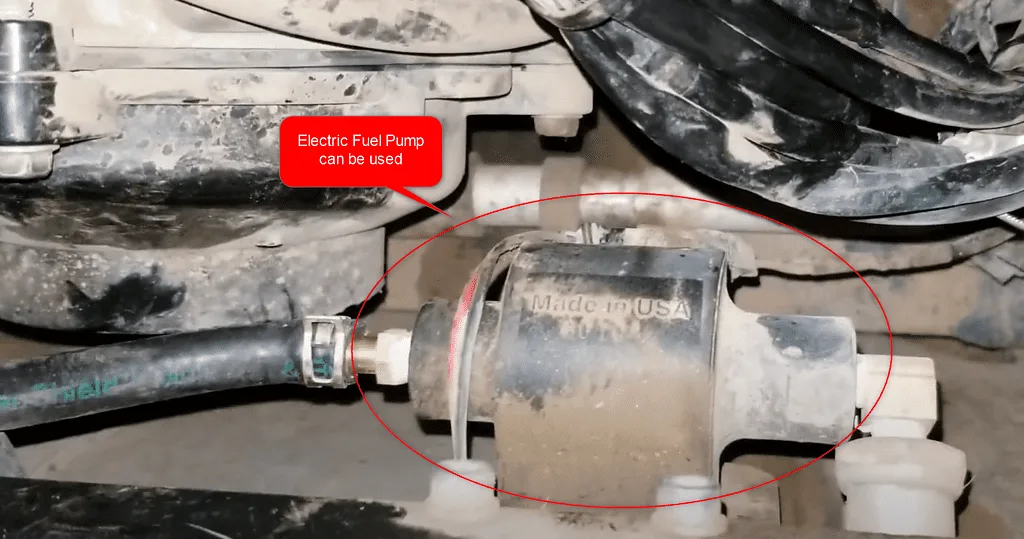
Lastly, if the problem persists after trying some of the solutions listed above, it is essential to seek help from a dealer or mechanic. They can inspect the engine, diagnose the problem, and provide the best solution.
4. Common Breakdown of Engine:
When the UTV is pushed beyond its limits, some engine parts can get damaged or worn out, leading to engine breakdowns.
This is a common problem for any 4WD vehicle, such as the Yamaha Rhino 660, and it is essential to understand the cause of such breakdowns.
The most common issue users report is mechanical breakdowns, which occur due to the wear and tear of the engine parts. The most likely culprits, in this case, are the crankshaft and pistons, which can be damaged due to excessive use.
How to Fix:
To prevent engine breakdown on a Yamaha Rhino 660, checking the working pistons and crankshafts is essential.
If the pistons or crankshafts are worn and need to be replaced, it is best to do it immediately to prevent further damage to the engine.
If the pistons and crankshafts are still in good condition, it may be possible to change them to get the engine running again temporarily.
Although this is not a permanent fix, it should help keep the engine running until you can get it serviced by a professional.

5. Transmission Problems:
Yamaha Rhino 660 shows various problems with the transmission that creates hindrance in its working. The common issues linked to the transmission of Rhino 660 are:
- The problem of transmission slippage
- The problem of transmission over-heating
- Presence of unusual noise
- Delay in shifting
5.1. The Problem of Transmission Slippage:
Yamaha Rhino 660 is designed in a way that does not deal with the issue of slippage. But if your vehicle faces slippage issues, this indicates damage to the transmission system.
The transmission slippage issue is due to problems with the mechanical components of the transmission system, so those parts should be kept in consideration.
Symptoms of Transmission Slippage:
The sound of the gear slip indicates the slipping issue in the vehicle. You can also check for the error code displayed on the diagnostic tool to indicate a transmission slippage problem.
How to Fix:
If your Rhino 660 is showing the issue of transmission slippage, it indicates that the solenoids present in the gears are broken and need replacement

5.2. Problem of Transmission Over-Heating:
Another transmission issue that Yamaha Rhino owners have faced is the tendency for their mechanical transmission components to become damaged, worn, and malfunction under high heat levels.
This common problem affects most vehicles, but it can be particularly detrimental to the Yamaha Rhino due to its increased reliance on off-road performance.
High heat levels can cause a range of problems for Yamaha Rhino transmission. The most common of these issues is that the transmission components can become worn and malfunction.
This can result in several issues, such as decreased performance, higher fuel consumption, and a shorter life span of the gearbox.
These problems can be especially troublesome, as they can significantly reduce the off-road performance of the Rhino.
Symptoms of Transmission Over-Heating:
If the vehicle is responding slowly during acceleration and does not produce enough accelerating drive, that indicates the malfunctioning in Rhino 660 due to overheating problem.
How to Fix:
- STEP 1: Check the transmission oil and its level if the vehicle is showing issues due to overheating.
- STEP 2: Fill the oil level if the oil level is too low.
- STEP 3: Drain the dirty oil
- STEP 4: Fill it with fresh transmission oil.
It would be helpful for dealing with the overheating issue in Rhino 660.
5.3. Presence of Unusual Noise:
Regarding your Yamaha Rhino 660, it’s essential to recognize that these transmissions are not designed to make grinding and unusual noises.
If you hear an unpleasant sound while driving, you may need to contact a mechanic as soon as possible. This could be a symptom of a more severe issue that could put a damper on your riding experience.
For example, if you’re hearing a gear grinding or meshing sound coming from the rear of your Rhino, it’s essential to take a closer look. This sound, often hard to describe, can sound like metal vibrating together in the drivetrain. It usually happens when you’re off the gas and going downhill.
Symptoms of Unusual Noise:
Unusual noise produced by the different components in the vehicle indicates some issue with the transmission that needs to be fixed.
How to Fix:
The unusual noise is produced due to an issue with the component present in the transmission assembly in Rhino 660.
Therefore, it is recommended to seek help from a mechanic to change the entire assembly unit responsible for such unpleasant noise.
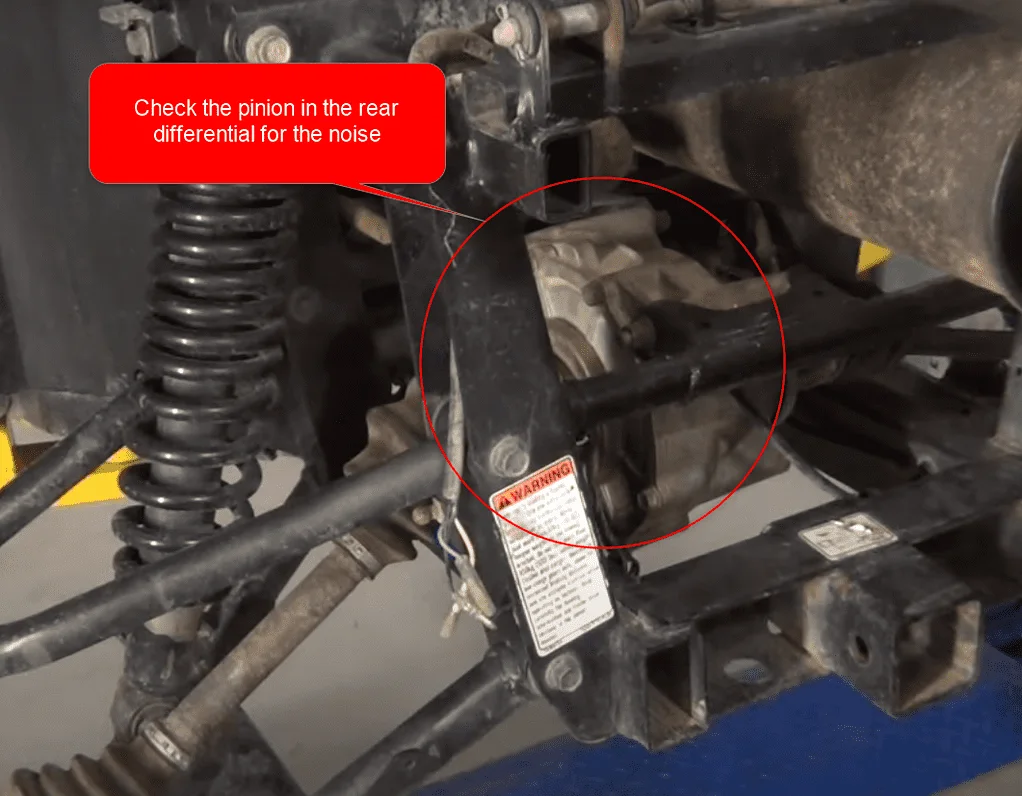
5.4. Delay in Shifting:
When pressing the throttle or shifting from one speed to another, if you’ve been experiencing a delay or lack of response, this could indicate a problem with your Yamaha Rhino transmission.
When a transmission has a problem, it can cause your ride to be a lot less smooth and enjoyable than it should be.
For example, the gears may take longer to engage, or there could be a noticeable lag in the response time.
Symptoms of Delay in Shifting:
The most common symptom is a slow response when attempting to shift. So if you’re feeling hesitation or lag when trying to shift, that indicates that you may have an issue.
How to Fix:
It is recommended to look at the software settings and gear ratio sensors if there is a shift delay. You can also seek help from your nearest mechanic.
6. 4WD Wiring Problems:
The servo motor of the vehicle usually breaks down, which causes problems with the wiring of the vehicle’s electrical components.
When the servo motor stops working, the 4WD drive system of the vehicle would be involved, and eventually, the 4WD drive system would stop working too.
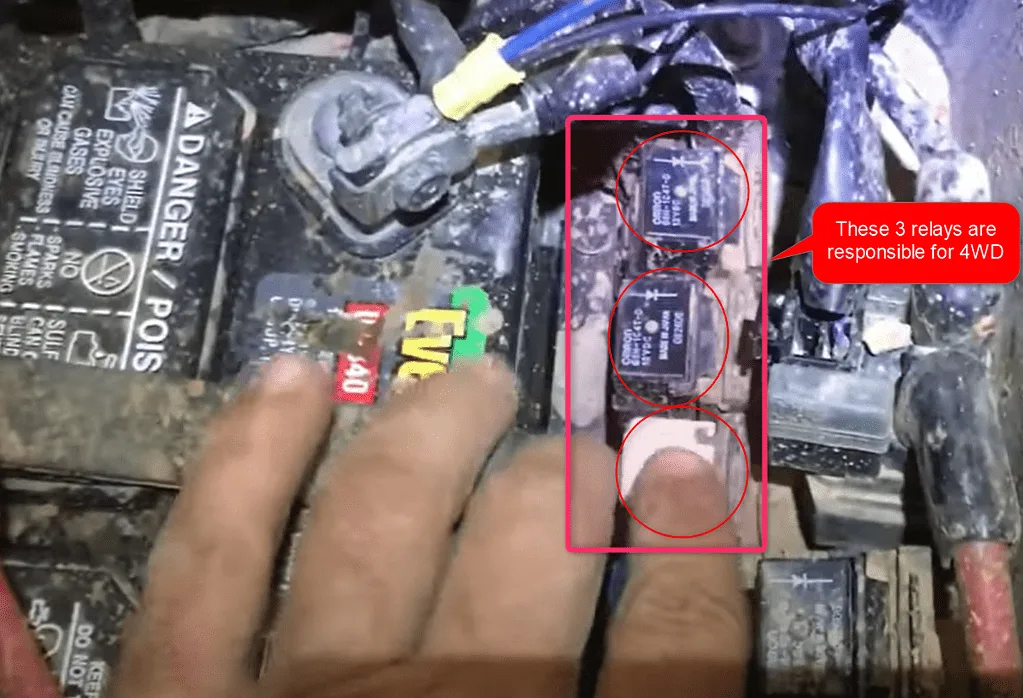
If the issue is caused due to broken relays of worn-off fuses, the problem can be solved easily.
In contrast, if the problem is caused due to some other complication, it might take more work to solve than it seems, and the vehicle should be taken to a certified dealership as soon as possible.
How to Fix:
To Diagnose, first check the servo motor, next relay and then switch and finally the wiring.
You can replace the broken wires and relays from the worn-off fuses to solve this issue of electrical wiring in the servo motor of Rhino 660.
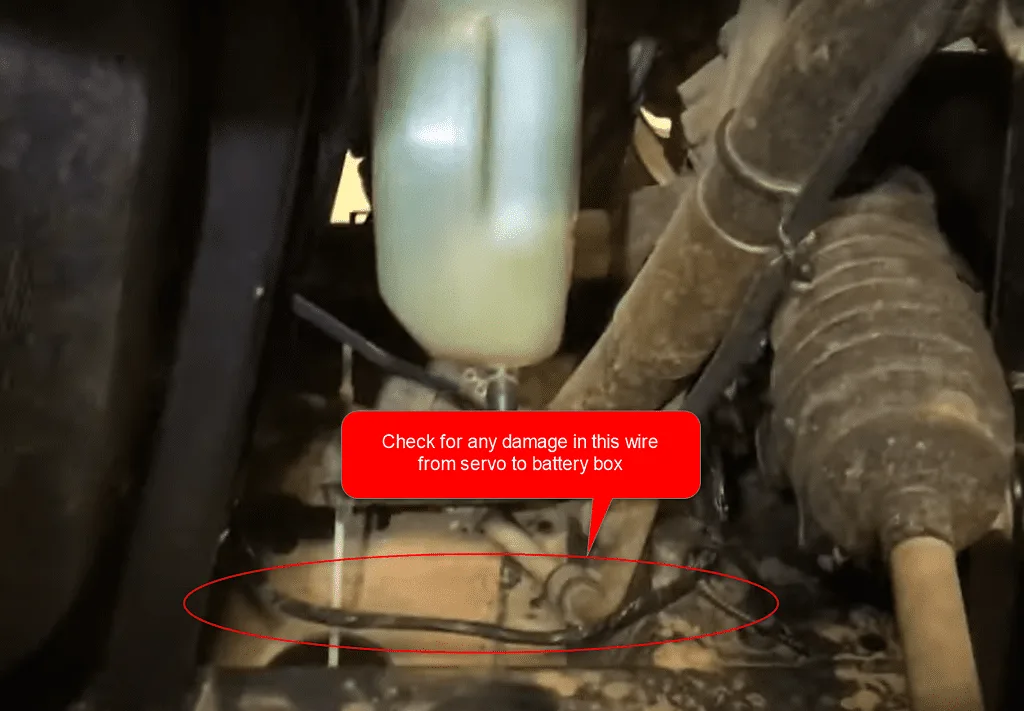
You can seek help from the user manual to check the servo motor or relays.
If the issue remains unresolved, you can use a multimeter to detect the broken or worn-out wirings. It is better to seek help from a professional to avoid inconvenience.
7. Neutral Light Not Working:
Some Rhino 660 owners have been experiencing issues with their neutral light not working. This is a significant problem, as the neutral light indicator lets you know when the gear is in neutral, which is essential for safely starting the vehicle.
However, the indicator works for other gears. Your Rhino 660 may not even start due to this issue.
How to Fix:
The gear indication light on the Yamaha Rhino 660 is controlled by a multiple-contact switch on the engine's upper driver side. This switch is situated at the end of the internal gear shifting shaft and is directly opposite the bellcrank controlled by the passenger side's shift lever pushrod.
To fix the neutral light not working, you will need to locate the switch first. Once done, you can clean the contacts with a soft cloth or cotton swab.
You should be gentle when removing and installing the switch as it is somewhat fragile and could easily become damaged if not done carefully.
Once you have done this, the neutral light should work as intended.
If it still isn’t working, the next step would be to check the switch’s wiring. If all the wires are connected correctly, then the issue may be with the switch itself, and you may need to replace it.
8. Problems with the Clutch:
The problem with the Rhino’s clutch is not commonly observed, but it is likely to occur once the vehicle travels a few thousand miles.
It would occur in such a way that the clutch of the vehicle, after traveling for a little time, might stop working.
Once the clutch stops functioning correctly, it creates extra weight inside the vehicle, and the driver feels the ride is unpleasant.
How to Fix:
If you are facing issues with the clutch in your Yamaha Rhino 660, frequently clean the clutches and lubricate them with grease.
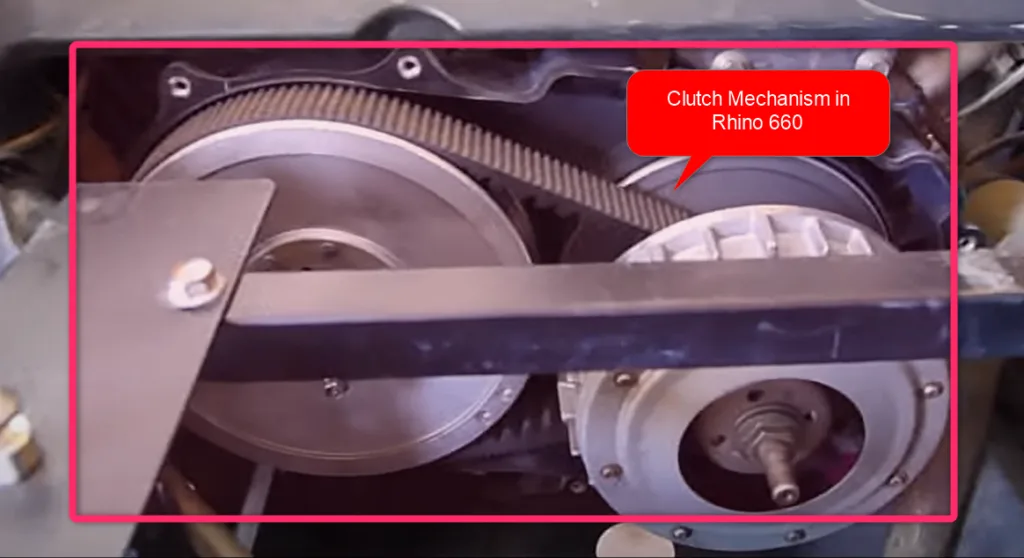
This will keep them at their place, and they can be used for an extended period, even at high speed.
Pros and Cons of the Yamaha Rhino 660:
As stated above, the Yamaha Rhino 660 is a good vehicle; it has an aggressive masculine look. It is equipped with a modern technology engine, but it has some common problems, which I have discussed above.
Below are some general pros and cons of having a Yamaha Rhino 660.
PROS | CONS |
The Yamaha Rhino 660 has excellent engine performance. | The Yamaha Rhino 660 felt heavy to some riders compared to other competitor vehicles. |
It is a unique 4x4 UTV. It has a good engine coupled with good looks. | It has a stiff suspension, which might cause turbulence while driving on uneven surfaces. |
It has a dual-range drive, which provides the vehicle with optimum power to pull any other vehicle behind it. | The suspension of the front side is quite fragile and has some strength issues. |
The vehicle's engine is a five-valve engine, which is powerful and has the good off-road capability. | The vehicle's frame at the rear end is fragile. |
Customer Feedback on Yamaha Rhino 660:
The Yamaha Rhino 660 has an overall impressive rating from users. Its performance, design, and looks are the main attraction points towards this side-by-side UTV.
When it comes to performance, the Rhino 660 is powered by a 660cc fuel-injected engine capable of producing up to 30 horsepower.
A few snapshots of real-time user feedback are below:


Final Thought:
The Yamaha Rhino 660 is one of the best UTVs on the market for providing a smooth ride. It is highly reliable, stylish, and comfortable and can be used for trail riding and daily driving.
Despite the potential issues, careful use and maintenance can ensure that your Rhino runs reliably for years. It is an excellent vehicle for those looking for a durable and dependable UTV for various uses.
Also Read:
7 Common Coleman 550 UTV Problems- How to Fix
9 Most Common Massimo UTV Problems & How to Fix Them
Top 7 Honda Pioneer 1000 Problems and Fixes
Kawasaki Mule Pro FXT: How to Fix the Most Common Problems
7 Common Problems with Honda Rancher 420- How to Fix
10 Most Common Problems with Polaris Ranger 700 XP(With Fix)
Why Are 3-Wheeler ATVs Illegal? What You Need to Know
Frequently Asked Questions (FAQs):
How many hours does the Yamaha Rhino 660 vehicle last?
Yamaha Rhino 660 requires changing the oil after 150 hours or 1500 miles. Yamaha Rhino 660 has high mileage and can last more than 300 hours a year.
Why did the Yamaha Rhino 660 was discontinued from the market for sale?
Yamaha Rhino 660 was discontinued and was considered an emerging hazard by the Consumer product safety commission (CPSC). It was done so because this vehicle showed many injuries and deaths.
What is the top speed considered on Yamaha Rhino 660?
The Yamaha Rhino 660 is about 35+ MPH, but it has a top speed of more than 50 mph in some cases too.
What is the worth of the Yamaha Rhino 660?
The average suggested base price of Yamaha Rhino is about $9500, with a retail price of $4900. Therefore, the total base price is approximately $9599.
Are the 500 hours considered high hours for an ATV vehicle?
500 or less than 500 hours are ideal for an ATV vehicle. It is recommended not to go with few miles as 5000, and more than this value are considered high miles for ATV vehicles.
With which vehicle Yamaha replaced the Rhino vehicle?
In 2014, Yamaha announced that they would replace the Rhino vehicle with a new product line named Yamaha Viking. It is a side-by-side vehicle that can hold three-person in the front cabin and has a four-wheel drive engine.
Is Yamaha Rhino considered a loud vehicle?
Yamaha Rhino is regarded as a loud vehicle and produces 91db of sound. However, it can be made quiet by adding a bolt-on silencer of an ATV derived from the Benz silent rider.
Who is responsible for manufacturing the engines of Yamaha Rhino?
Yamaha Rhino and all its associated parts are manufactured in Germany at Yamaha’s factory. It is a side-by-side UTV vehicle designed for drivers and passengers fond of riding two-wheel and four-wheel drive.
What is the towing capacity of the Yamaha Rhino 660?
Yamaha Rhino 660 has a towing capacity of 121 pounds. It has some additional features as it is a four-wheeled vehicle with fully independent suspension and a bed capacity of 600 pounds.
What are the best four-wheelers in the market?
The top brands for purchasing four-wheelers are:
- Honda Fourtrax Foreman Rubicon
- Polaris Sportsman XP
- Cam-AM Outlander XT
- CFMoto 1000 overland
- Yamaha Raptor 700R

This is Surya. I am an experienced off-roader. I have been off-roading for many years across several terrains. I am passionate about 4×4 driving and want to share my knowledge and experience with others.
My goal is to provide you with the most comprehensive and unbiased information about off-roading.
I curated this article through my personal experience and expertise, and I hope it helps you with what you are looking for.

 (+91)9123743026
(+91)9123743026
 24/1 Nibedita Sarani. M.B. Road, Kolkata- 700051, India
24/1 Nibedita Sarani. M.B. Road, Kolkata- 700051, India
Kenny Mollohan
Wednesday 8th of November 2023
After driving about 30 min the Rhino 660 back fires and will shut down. After about 5 min it will start back up (I have put in an electric fuel pump). I have had some luck pulling out the choke a little which increases the fuel mixture.